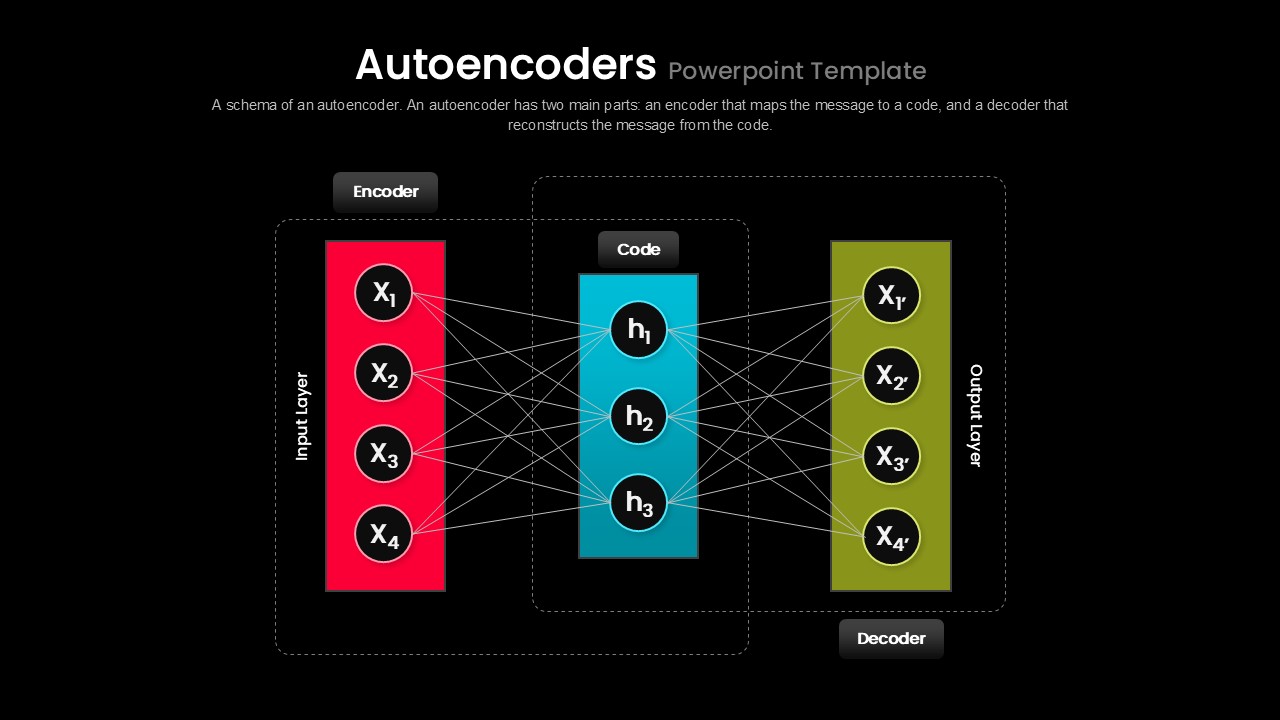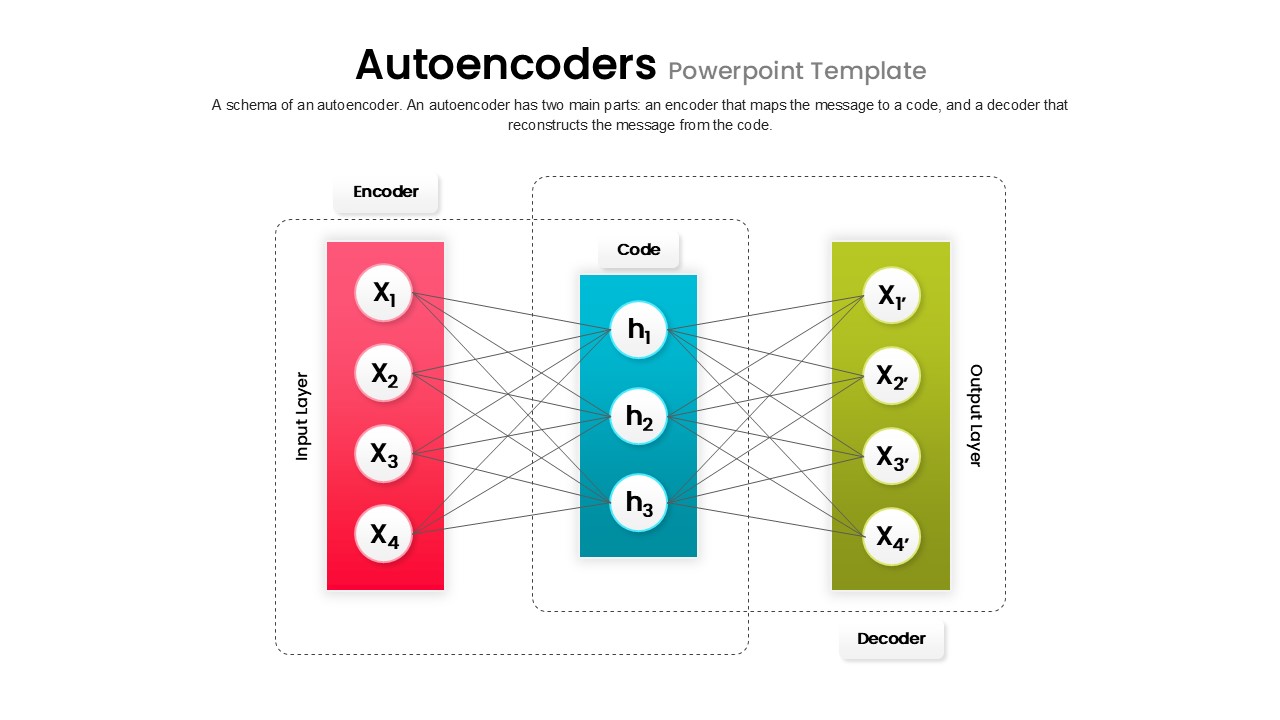Autoencoders PowerPoint Template Dark and Google Slides


Description
A clear, three-part schematic of a basic autoencoder neural network. On the left, a red input layer block holds features X1–X4X₁–X₄X1–X4. In the center, a teal bottleneck (code) layer represents the compressed representation h1–h3h₁–h₃h1–h3. On the right, a green output layer block reconstructs the inputs as X1′–X4′X₁′–X₄′X1′–X4′. Dashed outlines label the Encoder (input→code) and Decoder (code→output) regions, with connecting lines illustrating full connectivity.
Who Is It For
- Data Scientists & Machine Learning Engineers explaining or designing representation learning.
- Deep Learning Instructors teaching neural network architectures.
- AI Researchers illustrating dimensionality reduction concepts.
- Technical Presenters demonstrating end-to-end encoding/decoding flows.
Other Uses
- Variational Autoencoders (VAEs) by swapping code block labels.
- Denoising Autoencoders by adding noise annotations on the input side.
- Embedding Visualization for NLP or recommender systems.
- Bottleneck Network demonstrations in model compression talks.
Login to download this file

















































